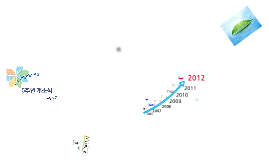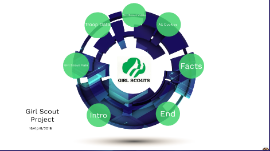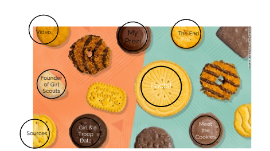Girl Scout
Transcript: Girl scouts Parts of history Timeline Girl Scouts in the 1910s During WWI, American President Theodore Roosevelt presents a family silver plate to Girl Scouts to be melted down for cash for the war effort, 1918. In the midst of the Progressive Era, and as the nation was expanding by adding the states of New Mexico and Arizona—but before women had the right to vote—Juliette Gordon Low founded Girl Scouts in 1912, with an emphasis on inclusiveness, the outdoors, self-reliance, and service. 1920s World Association of Girl Guides and Girl Scouts (WAGGGS) 1926 World Conference, Great Hall, Camp Edith Macy, New York Girl Scouting continued to expand its reach to more and more girls, with the first Girl Scout troops launching outside the United States in China, Syria, and Mexico. Additionally, one of the earliest Native American Girl Scout troops formed on the Onondaga Reservation in New York State in 1921, and Mexican American girls formed a Girl Scout troop in Houston, Texas, in 1922. Lone Troops on Foreign Soil (later called USA Girl Scouts Overseas) registered its first Girl Scout troop in Shanghai, China, with 18 girls in 1925. 1930s Promotional booklet, "Who Are the Girl Scouts?," published by Girl Scouts Inc., circa 1933 With the United States consumed by the Great Depression, Girl Scouts participated in relief efforts by collecting clothing and food for those in need. And as the country continued to deal with the waves of immigration from the previous decade, Girl Scouts began printing its Who Are the Girl Scouts? promotional booklet in Yiddish, Italian, and Polish. Girl Scouts present President Franklin Delano Roosevelt with a checklist documenting service hours, March 12, 1944. During World War II, Girl Scouts interested in flying participated in the Wing Scouts program. Girl Scout troops also operated bicycle courier services, ran Farm Aide projects, collected fat and scrap metal, and grew Victory Gardens, as well as sponsored Defense Institutes that taught women survival skills and techniques for comforting children during air raids. Japanese -American girls, confined to internment camps in Utah and California, also established troops. 1940s The Central Los Angeles Council of Girl Scouts prepares “Kits for Korea,” 1954. Girl Scouts responded to the Korean War by assembling “Kits for Korea,” pouches of items needed by Korean citizens, and also continued to press issues of inclusiveness and equality, with Ebony magazine reporting in 1952 that even in the South, ". . . Scouts were making slow and steady progress toward surmounting the racial barriers of the region." 1950s Girl Scout Seniors at a Speak Out conference During this tumultuous and vibrant decade, Girl Scouts held “Speak Out” conferences around the country to lend their voices to the fight for racial equality, launched the "ACTION 70" project to help overcome prejudice and build better relationships between people, and viewed the Apollo 12 moon landing at Cape Kennedy, Florida, as guests of NASA. 1960s Girl Scout Cadettes, Earth Day, 1970 During this period, Girl Scouts elected its first African American national board president, Gloria D. Scott; stood up for environmental issues by launching the national "Eco-Action" program; and helped Vietnamese refugee children adapt to their new homes in America. 1970s Girl Scout Cadettes, Earth Day, 1970 During this period, Girl Scouts elected its first African American national board president, Gloria D. Scott; stood up for environmental issues by launching the national "Eco-Action" program; and helped Vietnamese refugee children adapt to their new homes in America. 1970s Girl Scout Daisies at a playground, circa 1984 Girl Scouts established the Daisy level for kindergarten-aged girls as interest in Girl Scouting expanded, and also distributed The Contemporary Issues series that addressed some of the most serious issues teen girls of the day were confronting, including drug use, child abuse, and teen pregnancy. 1980s The website for Girl Scouts of the USA debuts on February 1, 1996. The site is visited by more than 18,000 people in its first three months of operation. Amid the explosive growth of personal computers, Girl Scouts introduced the Technology badge for Girl Scout Juniors, while also tackling illiteracy with the Right to Read service project, which nearly 4 million Girl Scouts and leaders participated in. 1990s Girl Scouts in San Antonio, Texas, at the 2002 National Conference on Latinas in Girl Scouting, pictured with then-Chief Executive Officer Kathy Cloninger Girl Scouts entered the first decade of the new millennium focused on the healthy development of girls, establishing the Girl Scout Research Institute to conduct studies and report findings. We also continued to emphasize inclusiveness by hosting a National Conference on Latinas in Girl Scouting and, in 2005, electing the first Hispanic as chair of the National Board, Patricia Diaz Dennis. Girl Scouts step away from their electronic

















